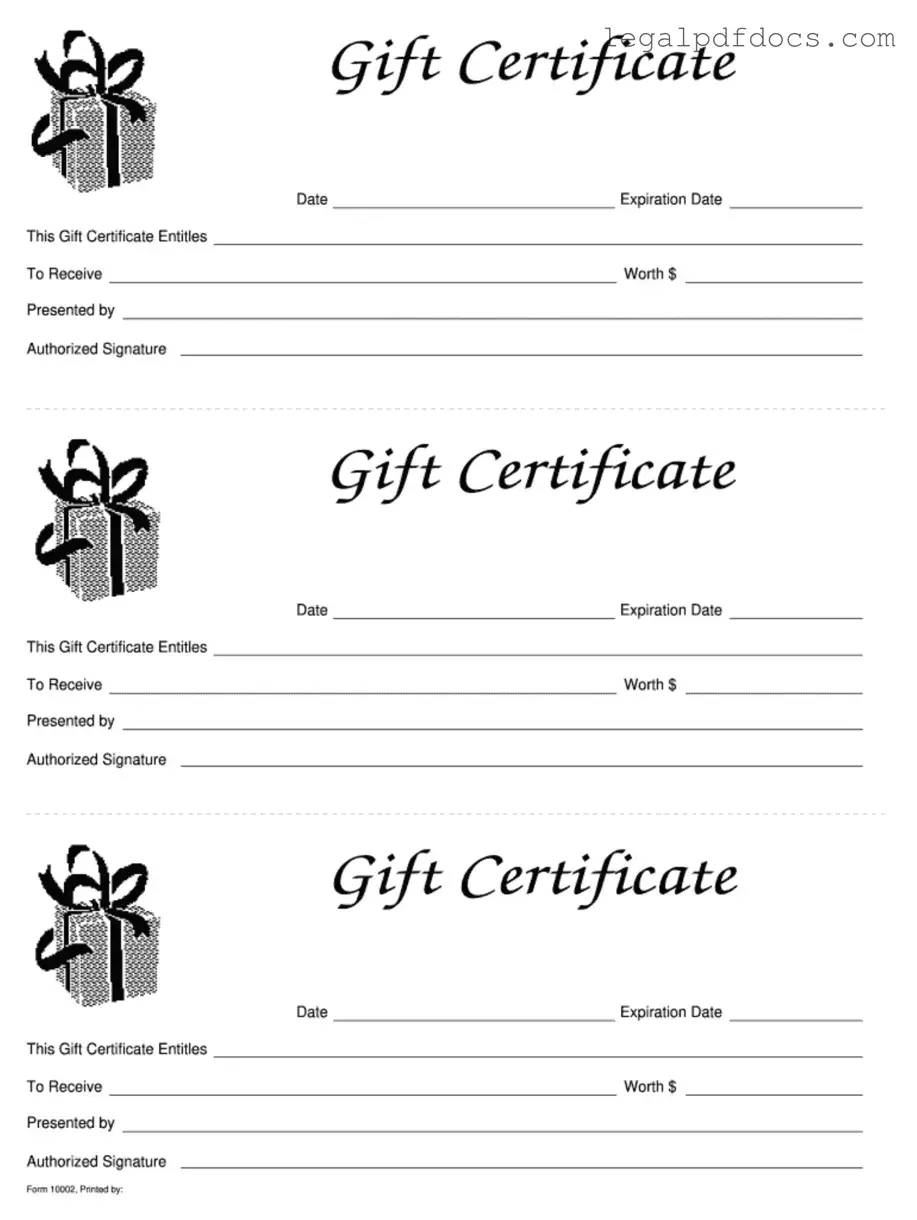Fill Out a Valid Gift Certificate Template
A Gift Certificate form is a document that allows individuals to purchase a certificate redeemable for goods or services at a specific business. This form typically includes essential details such as the recipient's name, the amount, and any special messages. To create a memorable gift, consider filling out the form by clicking the button below.
Open Gift Certificate Editor Here
